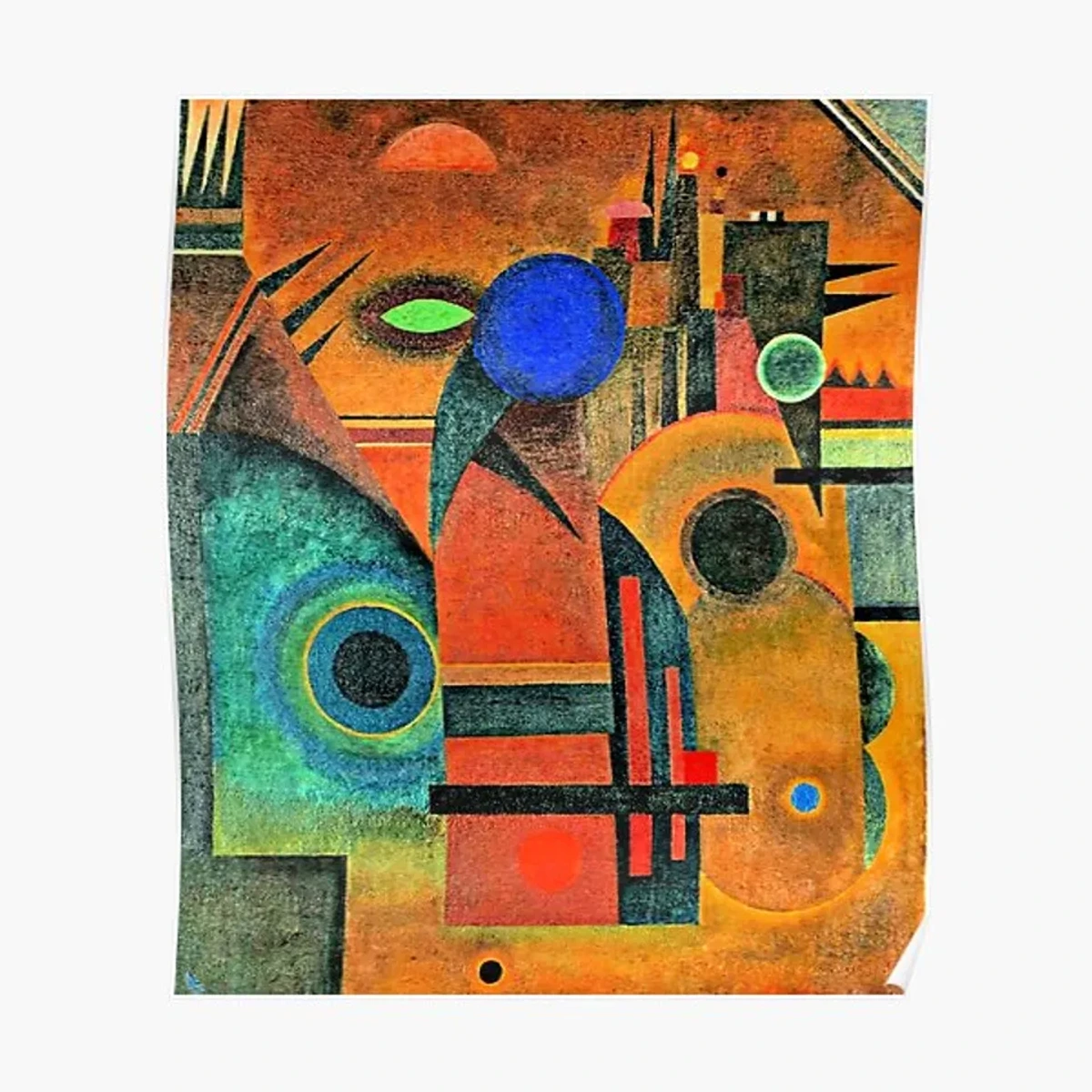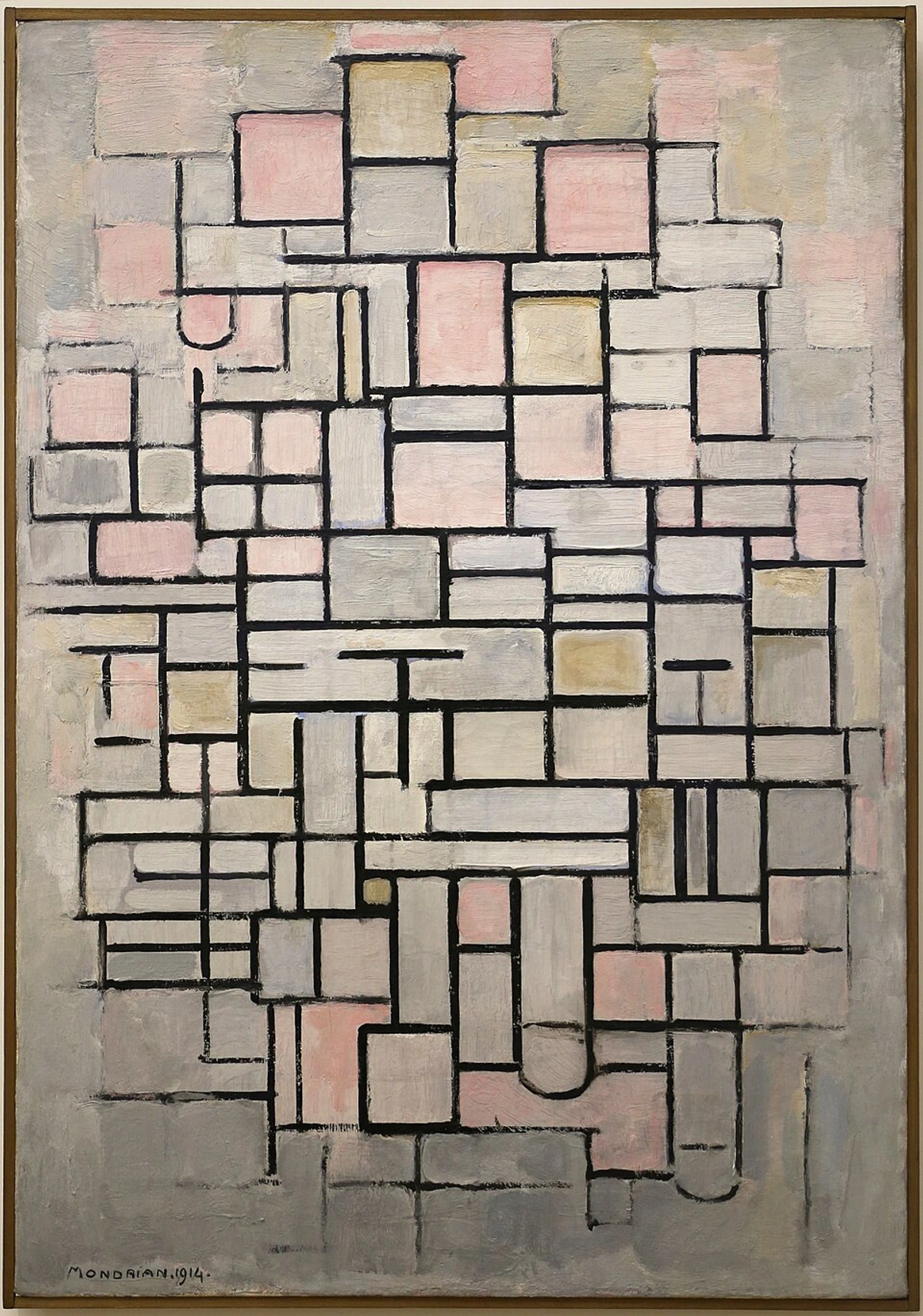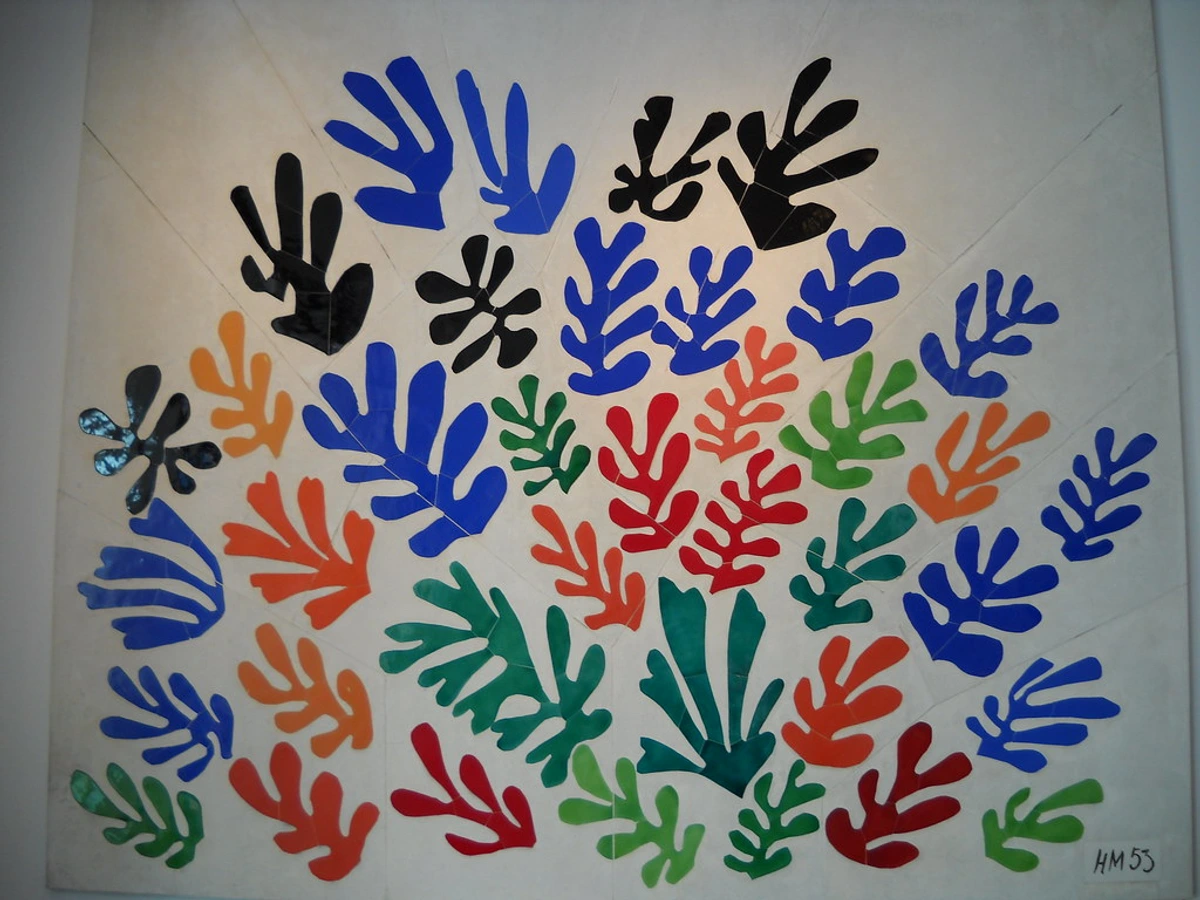
Collecting Abstract Art: Your Personal Guide to Starting a Collection with Connection
Uncover your unique path to collecting abstract art. This personal guide emphasizes connection over expertise, helping you find your style, navigate galleries and online spaces, budget smartly, and truly embrace art that speaks to your soul.
Building an Abstract Art Collection: A Beginner's Personal Guide
Starting something new, especially something that feels as grand and, let's be honest, a little intimidating as art collecting, can feel a bit like standing at the edge of a vast, beautiful ocean. You know there are wonders beneath the surface, but where do you even dip your toe? I’ve been there, staring at an empty wall, wondering if my taste was “good enough” or if I’d just end up with something I regretted. But here’s the secret, and I say this with the utmost conviction: collecting abstract art isn't about being an expert, or having an overflowing bank account. It’s about connection. It’s about finding pieces that whisper to your soul, that make your space feel more you. I remember vividly the first abstract piece that truly 'clicked' for me – a vibrant blue and orange canvas that felt like looking into a kaleidoscope of pure joy. It wasn't about what it was, but how it felt to be in its presence. And yes, even someone as prone to overthinking as myself can do it. So, let’s dive in, shall we?
Why Abstract Art? It's More Than Just Squiggles (I Promise!)
For a long time, I thought abstract art was just… confusing. Like a secret language I hadn't learned. I recall standing in a gallery once, staring at a canvas that was just a single, bold line across a muted background, and thinking, "Is this it? Am I missing something profound, or is this just... a line?" It felt like everyone else understood a joke I wasn't privy to. But then I realized, that's exactly its magic. It doesn't tell you what to see; it asks you how you feel. It’s a conversation without words, a direct line to emotion. It’s a liberation from needing to recognize a tree or a person. Instead, you're free to explore color, form, texture, and the sheer expressive power of a brushstroke. It’s quite profound, really, once you let go of the need for literal interpretation. For those curious to dive deeper, exploring what makes abstract art compelling can be incredibly insightful, or perhaps even a guide to interpreting abstract art.
Speaking of magic, the "connection" I mentioned earlier often starts here, in the purely emotional realm. For me, it's that inexplicable pull towards a certain palette or the sheer audacity of a line. It’s the feeling that a piece mirrors a part of your inner landscape, or introduces you to a new one. It's not about deciphering a hidden message, but about feeling a visible one.
I’ve found that the emotional language of color in abstract art plays a huge part in this. Sometimes, I’ll be drawn to a piece purely because of a specific hue that just… resonates. It's like finding a song that perfectly matches your mood, even if you don't understand the lyrics.
My own journey into understanding abstraction's roots really deepened my appreciation. I used to think it just "appeared" one day. But then I learned about pioneers like Wassily Kandinsky, Piet Mondrian, and Kazimir Malevich – artists who, in their own unique ways, consciously broke free from representing the visible world, partly in response to new technologies like photography, which took over the role of literal depiction, and broader philosophical shifts towards inner realities. Their groundbreaking work laid the foundation for the diverse world of abstraction we see today, challenging perceptions and inviting new forms of engagement. Kandinsky, for instance, believed in the spiritual power of color and form, using non-representational elements to evoke emotions and convey inner truths, moving art beyond objective reality into a realm of pure expression. Take a look at his 'Composition VII' below; notice how the complex arrangement of forms and vibrant colors directly evokes a feeling without depicting any recognizable objects.

Then you have artists like Piet Mondrian, who sought universal harmony through geometric purity, reducing art to fundamental elements like straight lines and primary colors, creating highly structured yet emotionally resonant compositions like his "Composition No. IV" seen here.

And Kazimir Malevich, with his Suprematism, aimed to express pure feeling through geometric forms, believing art should exist for art's sake, free from social or objective associations. His iconic 'Black Square,' for instance, pushed the boundaries of abstraction to its absolute limit, proposing a new, non-objective art that spoke only of pure artistic feeling. Artists like these weren't simplifying reality; they were expanding it, speaking directly to the soul without the filter of objective representation. And that, to me, is incredibly powerful. This spirit of pushing boundaries and exploring pure expression continues to evolve with contemporary artists today, who might use abstraction to comment on societal issues, explore new technologies, or simply delve deeper into the expressive potential of material and form. The beauty is, this conversation is ongoing, vibrant, and always inviting new voices. You can also see how later artists like Gerhard Richter embrace this freedom, as demonstrated by the close-up of his Abstract Painting (726), where texture and layered color create profound emotional depth.

Now that we've explored the heart of abstract art and its rich history, let's talk about how to bring it into your home, beginning with the most important step...
Your First Step: Ditch the 'Expert' Mindset and Embrace You
This is perhaps the hardest, yet most crucial, step. Forget everything you think you know about art collecting from movies or fancy magazines. This isn’t about investment (though some pieces do appreciate, that shouldn’t be your primary driver). It’s about passion. It’s about what makes your heart skip a beat, what makes you stop and stare a little longer. Your taste is valid, even if it's vastly different from what someone else considers "good" or "important." My biggest fear when starting was "What if I regret it?" But I've learned that regret often comes from trying to please others, or buying something because you think you should, rather than because you genuinely love it. So, trust your gut. Your collection is a reflection of you, not a resume for the art world.
The Journey Begins: Your Practical Steps to Collecting Abstract Art
Okay, so you're ready to embrace your inner art explorer, but where does one actually start? It feels less like a grand quest and more like a series of delightful adventures. Here's how I've navigated the exciting, sometimes bewildering, world of abstract art collecting.
1. Setting Your Budget: Your Wallet's Gentle Whisper
Let's get this out of the way: you absolutely do not need a trust fund to start collecting. I certainly don't! You can find incredible, meaningful pieces at all price points. For example, you can find beautiful limited edition prints for under $100 or smaller original pieces from emerging artists for a few hundred dollars. When considering prints, look for phrases like 'archival paper' or 'fine art reproduction,' and ensure they're signed and numbered by the artist for authenticity. For originals, a clear artist's signature and information about the medium and surface are good indicators of care. The trick is to be honest with yourself about what you're comfortable spending. Start small. Perhaps your first piece is a limited edition print, or a smaller original from an emerging artist. My very first art purchase was a small, vibrant abstract print I found online, and I still adore it. It taught me that connection isn't measured in dollars. Think of it as an exploration. Don't let your wallet's occasional protests stop you from starting; let them guide you to art that fits your budget and allows you to buy art for less.
![]()
2. Where to Look: The Thrill of the Hunt
This is where the adventure truly begins! The art world can seem opaque, but there are so many accessible avenues now.
Venue | Pros for Beginners | Tips for Engagement |
|---|---|---|
| Local Galleries | Incredibly welcoming; showcase emerging/local artists; direct interaction with knowledgeable gallerists. | Don't be intimidated! Start with smaller, independent galleries. They're often happy to chat. Ask questions: "Can you tell me more about this piece?" or "What inspired this artist?" |
| Online Platforms | Vast selection; browse from comfort of home (e.g., Saatchi Art, Artsy, dedicated artist websites like ours!); great for discovering a huge range of styles and artists globally. | Check return policies and artist reputations. Explore different filters and categories. Sign up for newsletters to see new works. Buying art online has opened up so many possibilities. |
| Art Fairs | Buzzing hubs of creativity; multiple galleries and independent artists under one roof; excellent for seeing a lot of art in one go and getting a feel for current trends. | Can be overwhelming – take your time. Talk to gallerists and artists; ask for business cards. Don't feel pressured to buy on the spot. |
| Open Studios & University Art Shows | Great for discovering new talent early; opportunity to meet the artist directly and hear their story; often more accessible prices. | Ask about their process and inspiration. You might stumble upon a truly unique piece that connects with you deeply. |
| Pop-up Exhibitions | Exciting opportunities to find fresh, contemporary work in unusual spaces; temporary nature creates a sense of urgency and discovery. | Keep an eye on local art listings and social media for announcements. These often highlight cutting-edge or experimental abstract art. |
| Artist's Social Media (e.g., Instagram, TikTok) | Direct connection to artists; often provides behind-the-scenes glimpses into their process and personality; many artists sell directly through these platforms, bypassing gallery markups. | Follow artists whose work you admire. Engage with their posts. Send a direct message to inquire about available pieces or commissions. This is a fantastic way to support emerging artists and build a personal relationship. |
Beyond the thrill of the hunt, remember that every purchase directly supports an artist's journey. When you buy art from local artists or directly from an artist's website, you're not just acquiring art; you're becoming a patron of creativity. It's a wonderful, symbiotic relationship that enriches both your life and theirs.
3. Developing Your Eye (and Your Intuition)
This isn't about learning "rules" of art. It's about calibrating your internal compass. Spend time with art – lots of it.
- Visit Museums & Galleries (Even Virtually): Expose yourself to different styles, periods, and artists. You don't have to love everything, but pay attention to what makes you pause, what evokes a feeling. I've found incredible insights just from wandering through a museum, letting my eyes guide me. Our museum in 's-Hertogenbosch is a great place to start, or even just exploring artists like Gerhard Richter or Christopher Wool online.
- Online Exploration: Sites like Pinterest, Instagram, and even general image searches can flood your senses with abstract art. Create mood boards, save images you like, and start noticing patterns in your preferences. Consider creating a "visual journal" or a dedicated digital mood board (perhaps on Pinterest or a simple folder on your computer) where you actively collect and review abstract art you're drawn to. This helps you identify recurring themes, colors, or styles in your preferences over time.
- Spend Time with Pieces: If you see something you're drawn to, don't rush. Sit with it. Walk away and come back. Does it still resonate? Ask yourself: What emotions does this evoke in me? What colors dominate? How do the forms or lines interact? Does it feel chaotic or serene? What story, if any, does my mind create? This gentle process of absorption is key to building genuine connection. What's one piece that truly made you pause recently, and why did it resonate so deeply? Sometimes, as an artist who's spent countless hours staring at my own canvases, I find I'm still caught off guard by the sheer impact of another's work – it's like my own internal compass is constantly being recalibrated, which is both humbling and exhilarating.
4. Finding Your Abstract Niche: It's All in the Feels (and Forms)
As you immerse yourself, you'll naturally start gravitating towards certain 'flavors' of abstraction. Do you find yourself drawn to the bold, sweeping gestures of Abstract Expressionism like Jackson Pollock's drips (often characterized by spontaneous, energetic marks to express raw emotion), or the serene, expansive planes of color in Color Field paintings à la Mark Rothko? Perhaps the crisp lines and pure shapes of Geometric Abstraction resonate, echoing artists like Mondrian, or maybe the raw, unrefined textures of Art Informel speak to your soul. There's also Lyrical Abstraction, which, while also fluid and painterly, tends towards more harmonious and poetic forms compared to the often turbulent energy of Abstract Expressionism, or the pared-down focus of Minimalism. Don't feel pressured to pick a side; your preferences will evolve. But noticing these inclinations helps you refine your search and articulate what truly moves you. It's like finding your favorite genre of music within the vast world of sound.
And don't limit yourself just to paint on canvas! Abstract art thrives across various mediums: captivating abstract photography, powerful sculptures that play with form and space, intricate collages (like Henri Matisse's late cut-outs, which are wonderfully abstract), or innovative digital art that pushes technological boundaries. Each medium offers a unique tactile or visual experience. Keep an open mind; your next connection might be found in an unexpected form!

5. Gentle Research: The Story Behind the Strokes
While you're ditching the "expert" mindset, a little gentle research can enrich your experience immensely.
- Artist's Story: If a piece resonates, look up the artist. What's their background? What inspires them? Understanding their journey can deepen your appreciation for their work. I once bought a piece simply because I loved the colors, only later discovering the artist's fascinating timeline and philosophical approach, which made the piece even more meaningful to me. Consider also seeking out "artist statements" or "interviews" as they often provide direct insight into the creator's intent, process, and philosophy behind their work.
- Basic Terminology: You don't need to be an art historian, but understanding terms like "Abstract Expressionism" or "Minimalism" can give you context for the kind of art you're looking at. Why is this helpful? It gives you a framework to understand the intent and historical context behind certain styles, even if you don't need to memorize every date or artist. If you're curious about movements like Abstract Expressionism, there are plenty of approachable guides.
- Provenance (for higher-value pieces): For more significant investments, understanding a piece's history (where it's been, how many owners) is important. But for most beginner collectors, this isn't a primary concern.
6. Interacting with the Art World: It's Just People!
Approaching galleries or artists can feel daunting, but remember, they're passionate about art too! Ever wondered how to approach a gallery without feeling out of place? It's simpler than you think! Attending artist talks, workshops, or online webinars can also be incredibly enriching. Hearing artists discuss their process, philosophy, and inspiration firsthand is a powerful way to deepen your connection to their work and the broader art community.
- Ask Questions: "Can you tell me more about this piece?" "What inspired this artist?" "Do you have other works by them?" "How does the pricing work?" There are no "stupid" questions.
- Be Honest About Your Budget: "I'm just starting my collection, and I'm looking for pieces in the X range." This helps gallerists guide you without wasting your time or theirs.
- Take Your Time: Don't feel pressured to buy. A good gallerist wants you to find the right piece, not just any piece.
- Follow Up: If you love a piece but aren't ready to buy, ask for the artist's contact or the gallery's email list. Building relationships can be incredibly rewarding.

7. Framing and Display: Giving Your Art Its Moment
You've found your soul-whisperer. Now, how do you make it sing in your home? It's not just about hanging; it's about staging a performance.
- Framing Matters: A good frame can transform a piece, enhancing its colors and protecting it. I've learned that a floating frame can make a canvas 'pop,' while a beautiful mat can truly elevate a print, drawing the eye inward. It's not just protection; it's part of the conversation the art has with your space. Don't skimp here; it's an investment in the art's longevity and presentation.
- Placement is Key: Consider lighting, wall color, and the flow of your space. Abstract art often thrives in minimalist settings where it can truly be the focal point, but it can also enhance modern interiors or make small rooms feel bigger. Think about the mood you want to create. For optimal viewing, generally hang art so that its center is at eye-level for the average person (about 57-60 inches from the floor to the center of the artwork). Also, consider directional lighting to highlight texture or specific features of the piece.
- Experiment: Don't be afraid to move things around. Your home is your canvas, and your art is your personal expression.
8. Care and Preservation: A Little Love Goes a Long Way
Once your art is home, a few simple steps ensure its longevity.
- Avoid Direct Sunlight: UV rays can fade colors over time, especially in watercolors or prints. I learned this the hard way with an early acquisition; I initially placed a vibrant limited edition print in what I thought was the perfect spot, only to notice, over time, a subtle dulling of a specific red hue. It was a gentle, yet firm, lesson from the art itself – a reminder that even abstract beauty needs practical consideration. For added protection, especially for valuable or cherished pieces, consider investing in archival framing materials like acid-free mats and UV-protective glass. It’s a small extra cost upfront that pays dividends in preserving your art's vibrancy for decades.
- Monitor Humidity: Extreme fluctuations can damage canvases and frames. Keep your art away from bathrooms or damp basements.
- Gentle Cleaning: Dust with a soft, dry cloth. If you're unsure, consult a professional conservator.
- Proper Handling: Always handle art with clean hands, and if possible, hold framed pieces by the frame or canvas edges to avoid touching the artwork directly and preserve its surface. You're now a custodian of beauty!
Common Pitfalls (Things I Learned the Hard Way)
Ready to avoid some common beginner blunders? I've made a few, so let me share what I learned – often through a mix of minor heartbreak and slightly lighter pockets:
- The "Investment" Trap: While art can be an investment, buying purely for financial gain often leads to pieces you don't truly love. And if you don't love it, what's the point? My first "mistake" was buying a piece I thought would appreciate, only to realize it just... sat there. No connection. It's since found a new home.
- Impulse Buying (The "Must Have It NOW!" Syndrome): Unless it's truly a once-in-a-lifetime opportunity from an artist you adore, give yourself time. Go home, think about it. If it's still calling to you days later, then it's probably the right piece.
- Worrying About "Getting It Wrong": This loops back to the regret fear. Your taste will evolve. What you love today might be different in five years. And that's okay! Your collection tells the story of your evolving journey. There's no "wrong" way to build a personal collection.
- Feeling Overwhelmed: The sheer volume of art can be paralyzing. Remind yourself it's a marathon, not a sprint. Focus on one piece at a time, one artist at a time. Take breaks.
- Buying for Trends: Chasing what's currently popular or "collectible" can lead to pieces that don't truly resonate with you in the long run. Trends fade, but genuine connection ensures. It’s easy to get swept up in the hype, but if a piece doesn't speak to your soul, it'll just become another decoration, not a cherished part of your collection.
- Ignoring Scale and Space: I once fell in love with a massive canvas online, only to have it arrive and realize it completely overwhelmed the wall I had planned for it. Always measure! A piece that doesn't fit its intended space can feel out of place and diminish its impact, leading to disappointment. Visualize the art in its future home and ensure its size complements your room, rather than dominates it uncomfortably.
Your Art Journey: Key Takeaways for the Budding Collector
- Trust Your Gut: Connection is paramount. Buy what moves you, not what you think you should buy.
- Budget Smart, Start Small: Art is accessible at all price points. Begin with what's comfortable and grow from there.
- Explore Widely: Online platforms, local galleries, art fairs, and even artist social media are your hunting grounds.
- Develop Your Eye (and Niche): Spend time with art, observe what resonates, and explore different abstract styles and mediums.
- Support Artists Directly: Your purchase fuels creativity and builds a meaningful connection.
- Care for Your Pieces: A little knowledge on framing, placement, and preservation ensures your art's longevity.
- Embrace the Journey: Your collection will evolve, reflecting your personal growth and ongoing discoveries. There's no 'right' or 'wrong,' only your unique story.
Your Evolving Collection: A Story in Progress
Collecting abstract art isn't a destination; it's a beautiful, ongoing journey. Your collection will grow and evolve as you do. The thrill of discovery doesn't end with your first purchase; it's an ongoing delight as you continue to explore and find new artists who speak to you, perhaps even surprising yourself with what you're drawn to next. Each piece becomes a chapter in your personal story, a tangible reminder of moments, emotions, and discoveries. It’s about building a space that truly reflects your inner world, one brushstroke, one splash of color at a time. It's a daily conversation, a subtle shift in mood, or a quiet moment of contemplation as you discover new details. So, take a deep breath, trust your intuition, and let the art find you. What new stories will your walls tell as your collection grows? What new parts of you will art help you discover next? Happy collecting!




